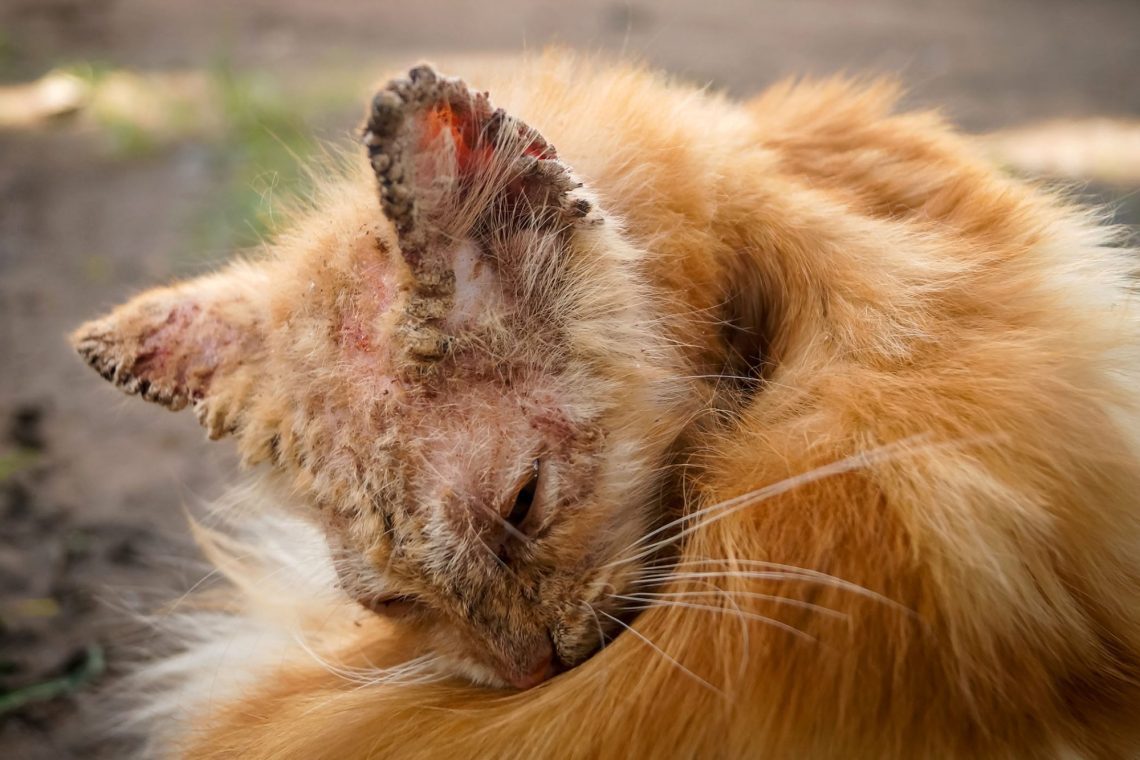
Sarcoptic mange in cats: causes of the disease and treatment regimen
What is sarcoptic mange and its causes
Sarcoptosis in human terms is scabies, which is accompanied by severe itching. It is a parasitic disease caused by the Sarcoptes canis mites. Itchy mites live in the upper layer of the skin and feed on particles of the epidermis, lymph, and fluid that forms during inflammation.
Unfortunately, the disease is zoonotic – that is, the owner may well become infected from his cat through physical contact. It is not transmitted by airborne droplets. In humans, the disease manifests itself in the form of itching and rashes on the skin. The rashes look like small pimples, which in no case should be squeezed out.
If the pet is free-range or has access to other animals, it can easily become infected. When infected, mites multiply very quickly and cause unbearable itching and burning in the affected skin areas in the cat.
Symptoms, diagnosis and treatment
Symptoms of a subcutaneous tick in a cat can appear almost immediately after infection, and may only take a couple of weeks. The disease first affects areas where there is the least amount of hair: the scalp, ears, wings of the nose, and then moves to the whole body.
The main symptoms are:
- Red spots on exposed skin and mucous membranes.
- Severe itching and constant attempts to scratch the cat.
- Dry skin on the affected areas, profuse hair loss.
- Crusts on the affected areas, which form a few days after the onset of itching. They can gradually fall off, leaving behind weeping sores.
- Loss of appetite.
- Possible further development of the infection without proper treatment of the affected skin.
If symptoms occur and sarcoptic mange is suspected, the cat should be seen by a veterinary dermatologist as soon as possible. The clinic will conduct a visual examination and prescribe an examination, which includes blood tests, scrapings from the affected areas of the skin and bacteriological culture.
Before visiting the clinic, it is necessary to isolate the cat from other pets. Additionally, you can wash the cat with a special shampoo, if the veterinarian recommends it remotely before the face-to-face visit.
Treatment for sarcoptic mange takes approximately two weeks. It includes antiparasitic therapy, treatment of affected skin with antiseptics and special emollient creams, and antihistamine therapy.
Prevention
To prevent primary or re-infection, you need to:
- Thoroughly disinfect the room in which the cat lives. It is better to involve professionals for this.
- Wash blankets and pillows.
- If the cat goes for walks, it is better to take her out for a walk in a harness and on a leash in order to avoid contact with stray animals.
- After walking on the street, treat the cat’s paws and muzzle with an antiseptic that a veterinarian will recommend.
- At least once every six months, visit a veterinary clinic, conduct examinations and treat the cat from parasites.
- Consult your veterinarian or breeder about your pet’s diet.
The health of a pet is in the hands of its owner. The more attention paid to caring for a cat, the more chances she has for a happy and healthy life. At the first signs of malaise, you should not treat yourself – you need to contact the nearest veterinary clinic. The sooner you start treatment for any disease, the faster and easier the recovery process will be.
See also:
- How to keep your cat healthy: preventive measures
- Cat Vital Signs: How to Measure Temperature, Pressure and Respiration
- The most common cat diseases: symptoms and treatment





